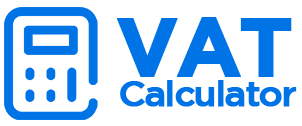Current VAT Rates in the UK- How Much is VAT in the UK?
Value-Added Tax or VAT is one of the main indirect taxes that is collected in the UK. It is charged on the taxable goods and services by the companies registered with HMRC to collect VAT and submit on behalf of consumers.
VAT Rates in the UK
Currently, three types of rates are charged in the UK. these are
- Standard VAT rate of 20%
- Reduced VAT rate of 5% and
- Zero VAT Rate
Standard VAT Rate
This tax rate is mostly charged in the UK. If a reduced VAT rate of 5% is not charged or if the product is not exempted from tax, then surely that item would be charged with a standard tax rate of 20%.
Reduced VAT Rate of 5%
It is charged on the following category of goods and services.
- Fuel and electricity used for home heating
- Products used for kids such as children’s car seats, safety seats and carry coats
- Goods and services used for installing any heating or gas supply.
- Any goods that are used for the mobilization of older people.
- Products that are used for discontinuing smoking such as nicotine patches, etc.
- Any contraceptive products that are purchased other than the state-regulated institution.
Zero VAT Rate
The following products are charged with zero VAT rate such as.
- Different basic food items.
- Some printed items, such as newspapers, books etc. It also includes electronically supplied books, periodicals, newspapers, and other similar nature items.
- Wireless sets and audiobooks that are used by visually disabled people.
- Drugs and aids for disabled people.
- Advertisements expenses for charity
- Children’s clothes and footwear.
- Equipment used for protection.
- Women sanitary products
VAT Exempted Products
Some products are exempted from Value Added Tax such as.
- Educational services.
- Dental services.
- Medical services that are delivered by professionals.
- Different medical and diagnostic services are provided by public institutions.
- Financial services like insurance and banking etc.
While discussing current VAT rates in the UK, it’s important to note that above-mentioned products exempted from VAT belong to the main category. If you go deeper in any specific category then some items within these categories may have different VAT rates. For instance, milk is a basic food item, falls under the zero VAT rate category, while ice cream, a by-product of milk, is charged with the standard VAT rate of 20%.
Furthermore, different temporary tax rates may be imposed on certain items. For example, the tax rate on energy-saving installations is set at zero VAT from April 1, 2022, until March 31, 2027. After this period, they will be again charged with a reduced tax rate of 5%.
Businesses should stay informed about current UK VAT regulations, as they may benefit from temporary reductions in tax rates if declared for a specific period.
How to Calculate VAT?
VAT is added at every stage of product manufacturing, from its manufacturing to selling. At each stage, the supplier adds the tax to the product price and then submits it to HMRC. In this way, suppliers of every raw product charge this tax at each stage until the final product reaches the end consumer. He will pay all the taxes included in the product price. The following example can explain it clearly.
- If the basic price of a material is £10 and VAT is charged @5%, then the product price will be £ 10.5.
- Now the product price by the manufacturer is £ 20 and the tax charged @5% is £1. Out of this £1, 0.5 is already paid at the time of purchase of basic raw material, so the rest of £ 0.5 will be submitted to tax authorities. The product’s final price at the manufacturer level will be £20.5.
- Now if the retail price of this product is £30, and the tax amount is £1.5, @5%. Out of this 1.5, £1 is already paid to the HMRC, and the rest of 0.5 is added to the product price. Now the consumer has to pay the actual amount of £30.5 as the product price.
How to Pay VAT?
The VAT can be paid by any of the following payment methods.
- You can pay this tax by your debit or credit card online through your HMRC account
- By online banking
- Through your building society. It requires a payslip from HMRC which it will issue after application.
- Direct debit
- Standing order
FAQs
What is the VAT number?
While discussing the current VAT rates in the UK, a VAT number is a unique number that is issued by HMRC to every company who is required to be registered for collecting and submitting VAT.
What is the process of verifying VAT registration validity?
Visit the official website of HMRC and enter your VAT number to check its validity.
What is the current VAT rate in the UK that is charged on residential conversations?
A reduced tax rate of 5% is charged on residential conversations.
Conclusion
When discussing current VAT rates in the UK, we see three value-added taxes in practice: the standard VAT rate, reduced VAT rate, and zero VAT rate. Some items are exempt from this indirect tax. It’s important for businesses to be aware of the current VAT rates when imposing and submitting this tax to HMRC.
